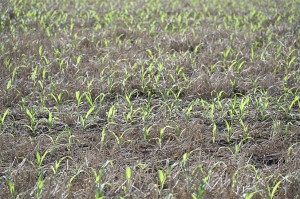By Lyndon Smith
President and CEO,
Bio Huma Netics, Inc.

Our association with ARA goes back to the 90s, and we have been a supporting member company since then. Almost five years ago ARA offered us a position on its Board of Directors, which is made up mostly of ag retailers, to represent the ag retail suppliers group. It has been an honor to be a part of the Board of Directors for ARA and to serve on many of their sub-committees. This service gives us ample opportunity to understand and lend a voice to help resolve the numerous challenges faced by ag retailers across the United States. Also, it bodes well for Bio Huma Netics, Inc. (BHN) to be recognized in the premier ag retail industry organization without being a part of that industry in the traditional sense, but primarily as a global supplier of nutrients and biostimulants into distribution and directly to independent ag retailers to meet their growers’ needs.
It’s remarkable how ARA provides great services to support ag retailers and distributors within the industry while also providing a trusted voice for the entire ag industry at the national regulatory and legislative levels. ARA gives us an opportunity annually to participate in a “fly in” to Washington, D.C., where we advocate and educate senators and representatives about important ag retail issues. Those issues include ag transportation, rail service, migrant agricultural worker visas, and more.
I’m often amazed how agriculture, in general, in the United States crosses both sides of the political aisle—we have several Democrat lawmakers who are staunch agriculture supporters and many Republican lawmakers who are pro agriculture. Our industry concerns are not specific to a particular political party line. Individually, most of us can’t afford to have or hire a lobbying group, and ARA performs that function so expertly for us!
ARA also gives us several opportunities to meet and interact with our peers and industry experts. Potential competitors come together in a non-threatening environment to share and discuss agricultural issues and challenges. This industry-wide sharing is perhaps one of the best-kept secrets that give participating ag retailers and suppliers their competitive advantage. We cherish these opportunities each year and have benefited greatly from the programs and conferences ARA offers.
Now, moving to some of the major challenges that ag retailers face nationwide, I would say “profitability” is a big challenge. Many ag retailers struggle to remain profitable. Traditionally, they have bundled their services into the price they charge for their products—which means they have charged a higher price for the products they sell without a separate service charge for the services that they render. Many ag retailers continue this practice and sell their products at a premium. However, widespread use of the internet has now enabled growers to find unbundled products at lower prices. Retailers are finding it increasingly difficult to sell their products at those premium prices. This poses a big challenge for ag retailers to determine if they should unbundle the costs of their services from the product price and charge separately for those services. This has been an ongoing challenge from many years.
Another challenge that ag retailers face is to determine what products they should carry. Depending on their immediate need and based on each year’s biotic and abiotic stresses, growers can ask for any product for any of their crops at any time on a very short notice. If a retailer doesn’t have it, then they will go to another source to find that particular product as quickly as they can. So, ag retailers face the dilemma of figuring out how to stock and maintain inventories for all these products that the growers may or may not need. It costs a lot of money, time, energy, and warehouse space to keep up with such a vast inventory of potential products.
An additional issue is the market leadership of mega corporations in the U.S. ag retail world. These giant companies can easily afford to be vertically integrated from manufacturing, to distribution, to their own retail outlets–they basically control the chain all the way through. It puts smaller manufacturers and regional or independent ag retailers at a disadvantage without the resources that the national manufactures/retailers have. Each small manufacturer and independent or regional ag retailer needs to figure out what their niche is: whether it be a particular crop or a series of crops, or maybe a particular geographic region that’s not being covered or serviced by one of the big players.
There are many more challenges that ag retailers continue to face, including regulatory and governmental oversight issues. We discuss all these issues at ARA regularly in hopes of providing guidance and support that the ag retailer industry may need to survive and succeed.
Do I think these on-going issues will resolve? Or at least make some progress? There’s always progress–that’s the beauty of it! Over the years, some of the things we have pushed got through, some didn’t get through. So, we come back and keep addressing them in the future till we find a way!
Related Posts

This Week in Ag #43
December 8th is #NationalChristmasTreeDay. This of course sets up the great debate, real or fake? While every family weighs the pros and cons of choosing the Tannenbaum they rock around, a popular nation is that fake trees are more eco-friendly. After all, they can keep for many years, right? And isn’t it bad to cut down real trees merely for decoration? Not so fast.

PS Article Published in Tri-State Seminar Proceedings
An article by Heather Jennings, PE, Director of Probiotic Solutions®, has been published in Tri-State Seminars Magazine, the proceedings of the 36th Annual Tri-State Seminar, held on August 9–12, 2021, in Las Vegas, Nev. Ms. Jennings was a featured presenter at the seminar, which provides training and certification classes to educate water professionals from Arizona,...

Video: Earth Day, 2022
On April 22, let's celebrate by doing something good for Planet Earth. There are enormous environmental challenges ahead, but also great opportunities.

